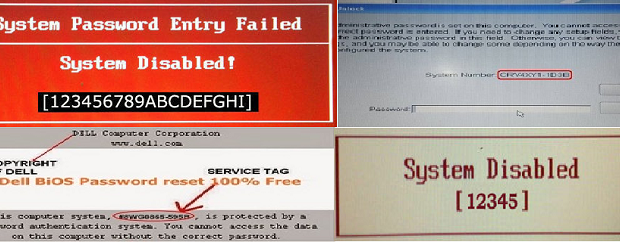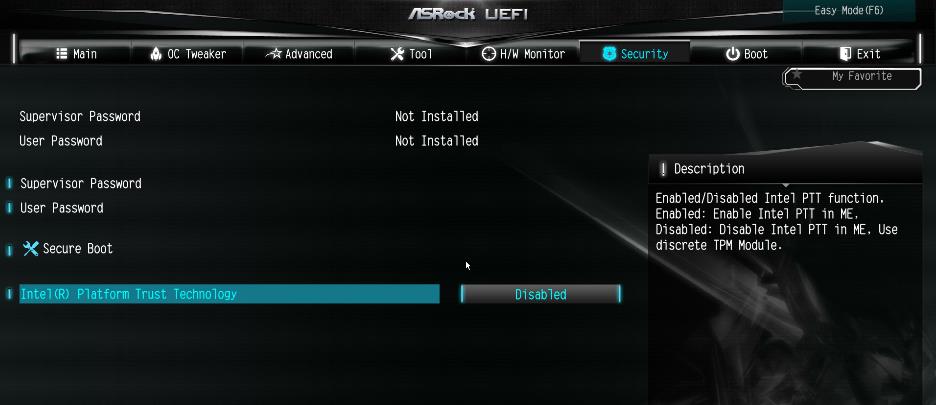

- Asus bios update security verification failed find install#
- Asus bios update security verification failed find Pc#
I will do some pictures and post them soon. You know when you press F8 (I guess) you will get an option menu to boot either from the USB or from the USB in UEFI mode.Ģ.

So I would have to create a GPT partition prior to the installation, i.e. , but anyway it did not boot the newly installed Windows.ĭo you think, to boot up in UEFI and then create GPT partition would help? But how do I select whether to create a MBR or a GPT partition tabel on the SSD? I think I havent seen such option during configuration part of the installation at all.

I ended up with a UEFI BIOS error message instead, telling me to go to BIOS=>Security=>CSM and enable the proper PCI-E.
Asus bios update security verification failed find Pc#
Now the SSD partition table looks like |-350MB NTFS BOOT-||-100MB FAT32 Recovery-||-112,3GB NTFS DATA-|.Īfter successful OS installation the PC rebooted but then IT DID NOT BOOT TO WINDOWS NORMALLY. So the installation program used some automated partitioning scenario for the whole capacity of the SSD and created 3 partitions. Then I clicked on this unused space and clicked Next. I only had Unlocated (or Unused) space on the entire the capacity of 112,8GB on the SSD. I had to remove the current MBR partition.
Asus bios update security verification failed find install#
Then during the installation, in the window where you configure your disks and partitions, there was one full capacity MBR partition created already, by me from a different PC, the system denies me to install OS on that SSD drive. I booted from USB stick with WIN8.1×64 install. How can I restore the security of the file? Or shall I somehow override the verification of the file? Or shall I use a different bios tool to write that file in it?įlashing of a modded BIOS into the BIOS chip of an ASUS BIOS chip can easily be done by using the specific ASUS "USB Flashback" feature, but I don’t know, whether your mainboard supports it. Zitat von GeorgettaCZ im Beitrag #1 Now the problem is that when I try to flash the bios with this modded file (via the bios built-in tool), I get error message "Security Verification Failed". Which BIOS settings did you choose within the BOOT section (especially regarding CSM) and which bootable devices are shown there? Did you istall the OS in LEGACY or in UEFI mode? Which Partition Table (MBR or GPT) did you create?Ģ. The only problem, which has to be solved, is the fact, that the BIOS or the OS doesn’t find the Windows Boot Manager while rebooting.ġ. Since you obviously were able to install the Win8.1 onto your PCIe connected NVMe SSD and to boot off it, there seems to be no need to insert any additional NVMe module into the BIOS of your mainboard. I you want to move ahead with using a PCI-E m.2 SSD as a boot device then be prepared to move to UEFI mode and either W8.1 or at Win-RAID Forum! I have a Plextor m.2 SSD that boots in both MBR and UEFI mode. It all depends on the compatibility support module in the BIOS.īTW - some m.2 SSDs will boot in either MBR or UEFI mode. Yes you can get W7 to boot in UEFI mode on some PCs. Most PCI-E m.2 SSDs require UEFI mode which is typically not supported by Windows 7. Question is -does the bios on the 700-215xt have an option to enable booting from pci-e card driver? I want to install and boot from an m.2 drive by instaaling an pci-e expansion card and installing the m.2 drive to it. The PK file must be formatted as a UEFI variable structure with authenticated variable. Configuration options: Load PK from FileĪllows you to load the downloaded PK from a USB storage device. Once the PK is deleted, all the system’s Secure Boot keys will not be active. Delete PKĪllows you to delete the PK from your system.

The system verifies the PK before your system enters the OS. The Platform Key (PK) locks and secures the firmware from any changes. This item allows you to save all default Secure Boot keys. This item appears only when you load the default Secure Boot keys. This item allows you to clear all default Secure Boot keys. The following item appears when OS Type is set to. Only on Windows ® UEFI mode that Microsoft ® Mode, Windows ® Vista/XP, or other Microsoft ® Secure Boot Get the optimized function when booting on Windows ® Option when booting on Windows ® UEFI mode or other Microsoft ® OS Type Īllows you to select your installed operating system.Įxecutes the Microsoft ® Secure Boot check. Configuration options: 2.8.9 Secure BootĪllows you to configure the Windows ® Secure Boot settings and manage its keys to protect the system from unauthorized access and malwares during POST. Configuration options: Boot from Expansion Devices Īllows you to select the type of PCIe/PCI expansion devices that you want to launch. Allows you to select the type of storage devices that you want to launch.


 0 kommentar(er)
0 kommentar(er)
